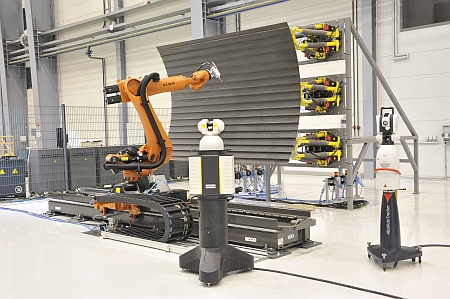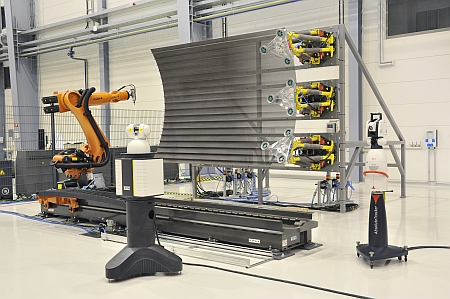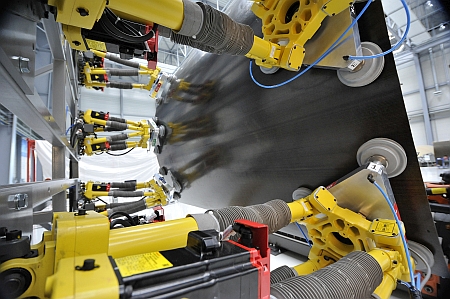


Automation: Precision using sensory technology
Assembly processes involving large components having low intrinsic stiffness achieve precision in various ways. Up until now, the most common approach has been to use high-precision framework structures (jigs) in which the component is mounted. The disadvantage of this solution is its costliness and the need for a jig for each component geometry. Fraunhofer IFAM experts have therefore developed a flexible jig that precisely adapts to the geometry of different types of components and allows active, automated tolerance management.
Automatic positioning, shape adjustment, and positional adjustment
The automated machining and assembly of lightweight structures meeting the required production tolerances requires high-precision measuring methods and positioning methods adapted to the respective component geometry and production situation. Flexible components up to XXL size, which due to production-related geometric deviations have to be considered as unique pieces, must be automatically positioned and the shape and position adjusted. Fraunhofer IFAM researchers control and monitor these aspects using automated 3D geometric measurements, for example using coupled laser-optical geometric measurement methods.
Adaptive path guidance and absolute positioning accuracy
The automation of processes for large lightweight structures requires interdependent hardware and software solutions. Component deviations from the target geometry necessitate adaptive path guidance. Software calibration increases the absolute positional accuracy of sensor-based actuators, for example industrial robots, in order to achieve reproducibility. In combination with CAD-CAM coupling, the necessary precision for component-adaptive assembly and machining is achieved.
Each process chain requires a customized automation solution. That is why Fraunhofer IFAM in Stade not only uses technology building blocks but also combines and integrates these with commercially available components such as robots, control systems, and various process-specific end-effectors to form a complete prototype plant.
Development work in this area is carried out in close collaboration with PD Dr.-Ing. habil. Jörg Wollnack of Hamburg University of Technology.
 Fraunhofer Institute for Manufacturing Technology and Advanced Materials IFAM
Fraunhofer Institute for Manufacturing Technology and Advanced Materials IFAM